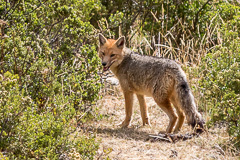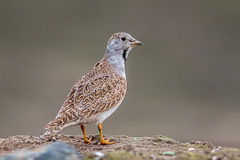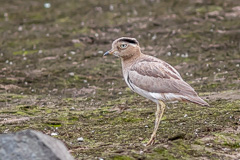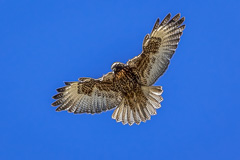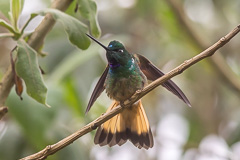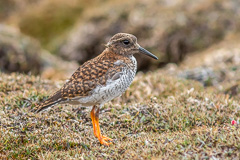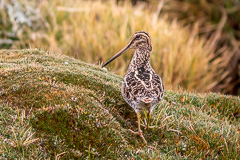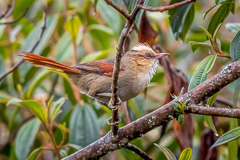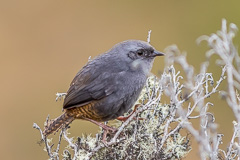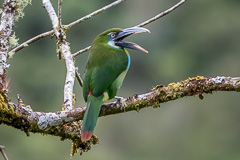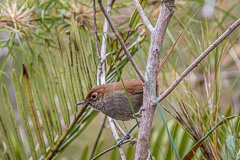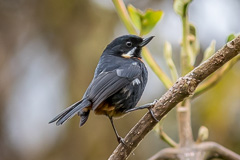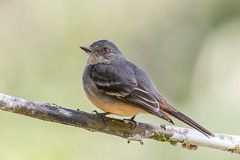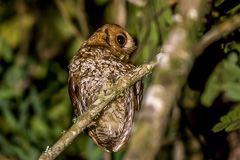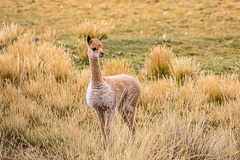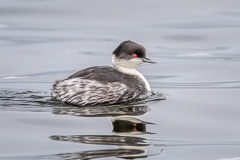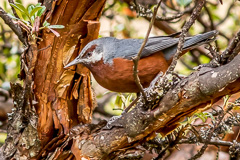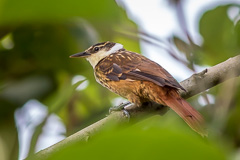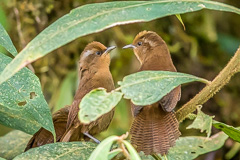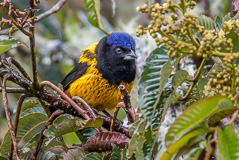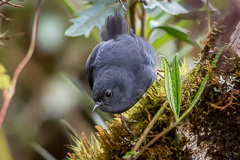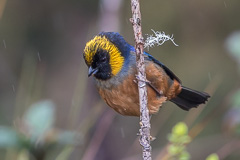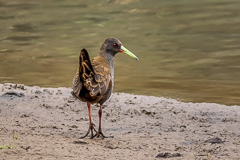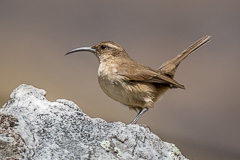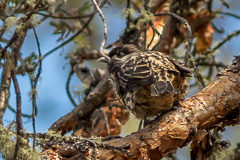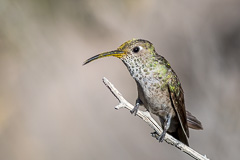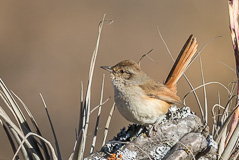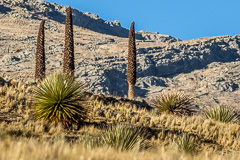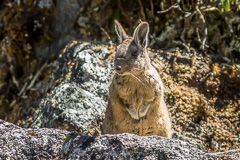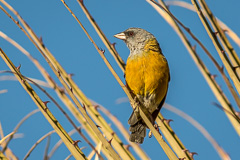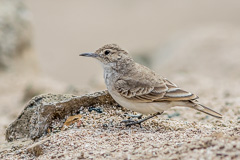Overview
Dates: |
7 - 27 July 2018. |
With Mike Danzenbaker. Although we'd both birded Peru on several occasions, a sizeable number of highly desirable endemic and speciality targets still remained. So, following our successful trip in 2017, we again approached Manu Expeditions to provide logistics and a guide.
Originally, our intention had been a lengthy trip, incorporating both central and northern Peru, but discovered the latter would be logistically challenging and exorbitantly expensive to arrange privately. However, as a planned, fixed-departure, trip for northern Peru was already planned by Manu Expeditions we opted to join that as part II, immediately following this trip. Logistics went smoothly and local guide Alex Durand, proved to be excellent throughout and was also our the guide covering the northern section. |
As birding central Peru is basically all high altitude, between about 2,300 and 4,800 metres, this means preparing for cold, wet weather, that entails bringing a fair amount of luggage, including both rubber and hiking boots. Camping was also required at Bosque Unchog, though fortunately Manu Expeditions was able to provide these essentials. As a great majority of the trip was birding at remote sites, a cook was provided and most meals were prepared in the field, thereby saving considerable time. Given the targeted nature of the trip, a substantial amount of driving was required between sites.
Itinerary
4 Jul. A lengthy flight on Cathay Pacific from Chiang Mai, via Hong Kong, to San Francisco, crossing the dateline and arriving on time at 22:30. As usual, immigration and customs were not that busy at San Francisco, though the 30 questions grilling received from immigration was annoying, over the top and rather unwelcoming. Kindly collected by Mike and Lee to overnight at their place.
5 Jul. A day of preparation and partial jet-lag recovery.
6 Jul. Early morning flight on United Airlines to Houston with onward connection to Lima, arriving at 23:00. Lengthy queues at immigration, though as plenty of staff working we were already out of the terminal and met our driver, Manoel, within 40 minutes. Overnight, just south of Lima, at Miraflores.
7 Jul. A spare day that we'd intentionally retained free in order to cover flight delays or issues - a lesson we'd learned, courtesy of United Airlines, on last year's trip. Handily, this coincided with being able to watch the football World Cup live at a decent time - an unexpected bonus. Late afternoon we ran into our guide Alex Durand at our hotel. 8 Jul. An 05:00 start to drive a couple of hours, north of Lima, to Lachay National Reserve, collecting our excellent cook, Abuelio, along the way. Despite being well inside the tropics, as usual, Lima coastal areas were overcast and very cool, with a light drizzle thrown in for good measure. Initially, we hiked a couple of kilometres across an open sandy plain to an area of cactus scrub. Very few birds in this habitat, and we missed one potential target in the form of Raimondi's Yellow Finch. However, our other target, Cactus Canastero, was present in small numbers together with Greyish Miner and Spot-billed Ground Tyrant. Returned to the coast and drove the entrance road of the reserve proper with its abrupt change of habitat, going from pure desert to verdant green slopes, the coastal fog turning the upper slopes green, within the space of a couple of kilometres. Peruvian Thick-knee, Coastal Miner and Least Seedsnipe were nice finds. Once inside the reserve we took a hike, again looking for, but not finding, Raimondi's Yellow Finch. Following lunch in the field, a three and half hour drive to Santa Eulalia, where we spent the night. |
9 Jul. Another 05:00 departure, with us heading directly up the Santa Eulalia Valley. It took about 90 minutes to drive to 2,000 metres, where we commenced birding. Initially, quiet in the extreme, but improving throughout the morning. First off Great Inca Finch, Mountain Parakeet, and Thick-billed Miner, plus plenty of Bare-faced Ground Dove, an Oasis Hummingbird and several Peruvian Sheartail. Working our way farther uphill we found Bronze-tailed Comet, Pied-crested Tit-Tyrant, Giant Hummingbird, Peruvian Pygmy Owl, Black-necked Woodpecker, Purple-collared Woodstar and Sparkling Violetear After an excellent lunch in the field, with Andean Condor, we ascended to Marcopomacocha and the pass at 4,840 metres, the highest point we would reach on this trip. A poor road - pot-holed and dusty - with the drive taking more than four hours. A few stops en route produced, Plain-breasted Earthcreeper, Andean Goose, Torrent Duck, Andean Gull, Mountain Caracara, Grey-breasted Seedsnipe and White-fronted Ground Tyrant, From the pass it took another hour and a half to San Mateo where we checked into a roadside hotel. In common with all the simple, local hostels we used on this trip, the night was noisy and disturbed by partying, blaring TV's and other inconsiderate behaviour - apparently standard in Peru. |
10 Jul. Started at 06:00 for a shortish drive to 4,700 metres by 07:00 which, as shortly after sunrise, was still below freezing and birdless, so took quite some while for birds to become active. Our main targets successfully found were Junin Canastero and Stripe-headed Antpitta.
At the main bog area at Marcopomacocha we successfully located Diademed Sandpiper-Plover and a single Olivaceous Thornbill plus several ground tyrants causing us considerable confusion - with certainly Ochre-naped Ground-Tyrant, Cinereous Ground Tyrant and, probably, others! |
A late morning foray produced several Puna Snipe, Andean Goose, White-bellied Cinclodes, Andean Lapwing, Puna Ibis, Crested Duck, Grey-breasted Seedsnipe, Rufous-bellied Seedsnipe, Common Miner and Streak-throated Canastero. During lunch a couple of Andean Condor drifted over. Left the area at 13:00 to drive to Conception by 17:00, with little en route other than rain, hail and a bit more snow.
11 Jul. A very early start today, due to the four hour drive to Pariahuanca, passing over the 4,560 metre pass at Huaytapallana in light rain, drizzle and longer showers. A roadside stop at 4,000 metres was very good, with Puna Pipit, Streak-backed Canastero, a heard Puna Tapaculo and Mountain Caracara. Farther down we stopped at 3,500 metres around the standard stakeout for Black-spectacled Brushfinch, only to find most of the area recently dug up for agriculture - yet another depressing, unprotected, Peruvian site being deforested at an alarming rate. As little habitat adjacent to the road, we took a side trail for an hour or so, eventually finding the undescribed Mantaro Wren, a pair of Black-spectacled Brushfinch and many Tit-like Dacnis. |
With improving weather we worked our way down slope, to about 3,000 metres, with a nice group of Blue-backed Conebill, Superciliaried Hemispingus, Barred Becard and Sierran Elaenia. Mid afternoon we spent time searching, eventually with some success, for the also undescribed Mantaro Thornbird. Left late afternoon for the return four plus hour drive to Conception.
12 Jul. At 05:30 we drove to the start of the Satipo road, with the first birding around Pomacocha at 4,500 metres. Cold, well above the snow line and very scenic. The high altitude lakes held Andean Duck and a few Yellow-billed Pintail, Short-billed Pipit, Andean Lapwing and Andean Goose.
Dropping down the other side, most of the morning spent birding between 3,500 - 4,000 metres, with heavy fog and little bird activity. Once lower though, the weather cleared nicely, with good birding, including Milpo Tapaculo, Eye-ringed Thistletail and Fiery-throated Metaltail. After a late lunch we dropped to 2,500 metres, into cloud forest, with Blue-banded Toucanet, Blue-capped Tanager, Barred Fruiteater, Andean Solitaire, Crimson-mantled Woodpecker and Collared Jay. Overnight in the Apalla community, camped inside village communal hall, that was rather comfortable, although the bathroom facilities left a lot to be desired. |
13 Jul. Other than barking dogs, a quiet night. At first light we drove for 30 minutes on dirt roads above the village, then birded good looking forest along the road. Our main target here was Marcaparta Spinetail, a couple of which we heard in the valley below, but it took a good hour to obtain anything like reasonable views, plus Junin Tapaculo.
The cool weather again provided a slow start to the morning, but with the sun hitting the slopes we saw several feeding flocks plus Unstreaked Tit-Tyrant, Rufous Spinetail, Moustached Flowerpiercer and Sword-billed Hummingbird. Back to the hall for breakfast, later than planned, and we didn't actually leave till after 10:00, for the eight hour plus drive to Oxapampa through heavy traffic and an unusually high number of crazy drivers en route. At Oxapampa we had a terrible time finding the Ulcumayo Lodge we'd booked, due mostly to the lack of phone signal and no one having visited previously, so it was well after dark before we arrived, eight kilometres from town, down a terrible dirt road we almost didn't make. Very comfortable accommodation, and recommended, though not without teething issues such as insufficient solar power to charge all guests' chargables, no laundry and almost no beer. Due to the remote location no WiFi or phone signal either, which would have been fine had we'd not been informed there was. After dark, Scissor-tailed Nightjar was ridiculously easy, having a favourite spot on the path to the restaurant. A late sortie for Cloud-forest Screech Owl was unsuccessful. 14 Jul. A beautiful, clear morning, starting with an hour and a half drive back to town, up through Bosque Sho'llot, and down the other flank of the mountain, where we successfully searched for Creamy-bellied Antwren. A couple of other lengthy stops produced White-eared Solitaire and Rufous-tailed Tyrant among others. |
Following lunch, back at the lodge, we birded trails within the property, looking for Masked Fruiteater and Bay Antpitta, but no luck with either - only glimpses of Rufous-vented Tapaculo but little else. Quiet in the extreme despite the pleasant weather. At dusk Swallow-tailed Nightjar again around the lodge and Rufous-banded Owl heard. A second evening's trip for Cloud-forest Screech Owl was spectacularly successful.
15 Jul. All day on trails around the lodge. Our main target was Bay Antpitta, that although quite common, was extremely difficult, with but a few brief views. Masked Fruiteater eventually found, and feeding flocks contained Ocellated Piculet, Blue-winged Mountain Tanager, Oleaginous Hemispingus, Saffron-crowned Tanager, Yellow-throated Tanager, Common Chlorospingus, Flame-faced Tanager and Beryl spangled Tanager.
16 Jul. We had planned to leave by 07:00, but became totally distracted by Undulated Antpitta and Buff-browed Foliage-gleaner around the parking area, so eventually left 08:00 for the six hour drive to Lake Junin, where we birded the west side of the lake in the late afternoon, with excellent sightings including Andean Negrito, Chilean Flamingo, Dark-winged Miner, Black-breasted Hillstar and Ornate Tinamou. We finished the day with a local guide for Junin Rail. Overnight at a small hostel in town. At 4,100 metres, our coldest night, that coupled with the usual hostel noise was definitely a night to forget. |
17 Jul. Left at 06:30 to meet up with the boatman on the eastern side of the lake by 07:00. A very bright morning, with a heavy ground frost, and temperatures around -3°C. A number of duck were feeding at the lake edge including Andean Duck, Crested Duck and Yellow-billed Teal.
Once on the lake it took around 40 minutes to locate our first, and only, Junin Grebe - another globally threatened species with a declining population in dire need of effective protection. Once back to shore we birded the open areas hoping for Puna Plover, but alas not finding any. |
Other birds present included Burrowing Owl, Andean Negrito, Andean Lapwing, Andean Gull, Cinereous Harrier, Andean Flicker and Black-billed Skrike-Tyrant. Mid morning we started the long drive to Huánuco with several stops en route, the first being around La Quinea, where we encountered Giant Conebill, Baron's Spinetail and Streak-headed Antpitta. No luck with Thick-billed Siskin though. A second stop at San Rafael, where the road up the mountain is being widened and the habitat hence being destroyed, produced Rufous-backed Inca Finch and Black-crested Tit-Tyrant. Overnight in the large, but pleasant, city of Huánuco.
18 Jul. A 75 minute drive into the Carpish Mountains where we spent the morning along the Paty Trail. Habitat in this area is undergoing intense clearing for farming and cutting for firewood, and the accessible habitat is now fragmented and in poor condition. Within the next five years this would seem unlikely to be a viable birding site. On our morning hike down slope we found a couple of feeding flocks containing Brownish-flanked Tanager, Capped Conebill, Green-fronted Lancebill, Masked Trogon, Streak-headed Antbird, Tyrannine Woodcreeper, Band-tailed Fruiteater and a spectacular pair of Orange-breasted Falcon. Following lunch we birded the Tunnel Trail that, for the first couple of hours, was completely birdless. However, late afternoon, an explosion of activity, with calling Chestnut Antpitta, Rufous-breasted Antpitta, Peruvian Wren and Yellow-scarfed Tanager. A late return, through heavy traffic, to Huánuco. 19 Jul. Our plans to return to birding the Carpish Tunnel area were thwarted by a lightening general strike, across the major cities of Peru, with roads already blocked at 06:00 and police restricting movement. So alas we had no other option other than to return to the hotel and wait it out. A day of catching up with notes, photo processing, and lamenting potentially missed species. |
20 Jul. With the 24 hour strike over we could commence our trip to Bosque Unchog. Most birders visit here as long day trips from Huánuco, starting at 03:00. However, we took the camping option, allowing for extended birding, though the truly awful weather conditions meant the camping was cold, wet and miserable. Due to the state of the track up the mountain a good pickup is required. Ours arrived slightly later than planned, so by the time all the food and camping equipment had been loaded it was after 07:00 before we left. We arrived at Unchog at 09:30 and unloaded the vehicle, that duly left, since the birding is on foot a vehicle is not required. Due to the terrain, camping is only possible at the pass, which at 3,640 metres, is windswept, such that any rain tends to be horizontal.
On arrival the weather was reasonably dry with low cloud, so leaving Abuelio in charge of setting up camp we headed into the surrounding hills, bogs and elfin forest. Rubber boots are essential here given that much time is spent on bogs. Incredibly, almost the first bird we found was Golden-backed Mountain Tanager, one of our main targets and often highly elusive. Further trudging up-slope provided us with brief views of Jalca Tapaculo, Tschudi's Tapaculo and a flushed Andean Snipe. Returned to camp at 13:00 for lunch, luckily just before the heavens opened with hail and heavy rain, that unfortunately dragged on most of the afternoon. A brief reprise, late in the day, allowed a short walk back down the track we'd driven up, but produced not one single bird. 21 Jul. A beautiful clear night with temperatures dropping to 3°C. We left camp around 06:30, walking over the pass and down the steep trail that eventually leads to Carpish. Although clear as we left, rain started around 07:00 and continued to hamper our birding and drench us all morning. A tough morning, with us covering about three kilometres down the mountain, with almost no bird activity, no mixed flocks and little success. Best birds of the morning were Golden-backed Mountain Tanager again, Coppery Metaltail, Yellow-scarfed Tanager, a single White-chinned Thisltetail and a Large-footed Tapaculo heard. Arrived back at camp by midday with the rain still hammering down, and continuing all afternoon, restricting us to lounging in our tents the remainder of the day. |
22 Jul. Rain continuing all night until 04:00 when the skies finally cleared. Expecting great things, we left camp at 06:30, only for barely 20 minutes later the rain and fog to return. Another wet morning, with us walking even farther down the mountain. It should be noted that this trail is not for the unfit as, in addition to the three to four kilometre walk each way, the trail drops through almost 400 metres. Plus a stream mid way requires crossing a torrent on slippery rocks. Luckily, a 45 minute respite in the weather mid morning gave us several of our targets - Bay-vented Cotinga, Ochraceous-breasted Flycatcher and Pardusco. Despite several potential Rufous-browed Hemispingus heard, none were close or even vaguely viewable. Trekked back to the camp by 13:30, after which again we spent the afternoon sheltering from the ever-persistent rain.
23 Jul. A wet night, clearing into a beautiful sunny morning. Cold at first, with a ground frost and near zero air temperature. We again set off by 06:30, mainly in pursuit of Rufous-browed Hemispingus, but no positive sightings. Surprisingly, no more birds found than yesterday despite the excellent conditions, with only Drab Hemispingus added to the list. Back to camp by 13:30, to return to Huánuco, though this time a detour through the mountains was necessary due to repairs on previous route up. Our three days at Bosque Unchog was probably more than necessary, assuming good luck with the weather. |
24 Jul. Left early, at 05:00, for the long drive to Carhuaz town, with several stops along the way. Our first stop was a random break for breakfast around Shiclla that produced Baron's Spinetail, Black-crested Warbler, Rufous-browed Peppershrike and Tooth-billed Tanager.
On passing Laguna Contaycocha, an exploration of the lagoon and edge found Giant Coot, Plumbeous Rail, Andean Condor, Black-crowned Night Heron and Streak-backed Tit-Spinetail. |
Thereafter a drive through fantastic scenery and excellent weather, over a 4,500 metre pass where a high altitude stop gave us Peruvian Sierra Finch, D'Orbigny's Chat-Tyrant, Buff-breasted Earthcreeper and Andean Hillstar. A final stop, late afternoon, at Laguna Conococha gave us a good number of birds including Andean Duck, Andean Goose, Puna Teal, Chilean Flamingo, Streak-throated Canastero, Andean Negrito and many more. Overnight in Carhuaz in the shadow of Huascarán, the highest peak of Peru, dominating the landscape.
25 Jul. Left 05:00 and drove 90 minutes to Huascarán National Park. Once in the park, a long haul on poor roads with spectacular scenery and superb weather, with birding stops all day. Very cold, with temps not much above freezing initially. The main lake, just after the entrance, held a single White-winged Cinclodes, and a roadside stop beyond gave views of Ancash Tapaculo. After a two plus hour drive over the 4,700 metre pass, we headed down the north side trying for White-cheeked Cotinga, that took several hours, with a single bird found at the eleventh hour - quite a relief. A long drive back to town. |
26 Jul. First off, an early morning stop near Pueblo Libre for the localised race of Pale-tailed Canastero. In passing we also encountered Black-necked Woodpecker and Short-tailed Field Tyrant. Interestingly, we met a local lamenting the encroachment and loss of habitat in the area - something of a rarity in Peru. |
We then spent rest of the day in the hills above Caraz looking for Rufous-backed Inca Finch, with a full seven hours chasing shadows, finally rewarded with a few glimpses.
27 Jul. An all day drive to Lima with a couple of stops en route. Two hours from Carhuaz we deviated into the Carpa section of Huascarán National Park, where the high altitude landscape is dominated by the endemic Queen of the Andes Puya raimondii, the world's largest bromeliad. A couple of hours here produced Ornate Tinamou, Giant Coot, Dark-winged Miner, Streak-throated Canastero, D'Orbigny's Chat-Tyrant and Peruvian Sierra Finch. Mid afternoon we made an exploratory stop at the Bandurria Archeological Zone, 150 kilometres north of Lima. |
In cool, but very windy conditions we found a number of new trip species, such as Belcher's Gull, Grey-headed Gull, White-cheeked Pintail, American Oystercatcher and Peruvian Booby, though no luck with any Peruvian Tern which reputedly breed.
28 Jul. A spare, contingency, day based near Lima airport, prior to the start of part II, northern Peru.
Galleries
Bird images from this, and other, birding trips.
Travel images from this, and other, birding trips.

